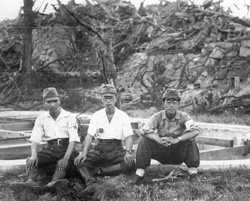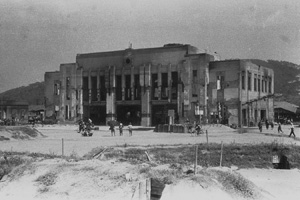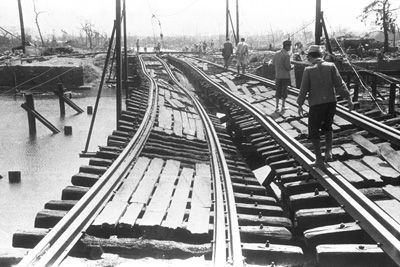| Hajime Miyatake departed Osaka Station on the afternoon of August 8 and arrived in Hiroshima the evening of the 9th Miyatake took most of his photos on the 10th and 11th. Four days later (probably the 12th), he returned to Osaka. In his journal, Miyatake wrote, "Looking at people near death laid out on concrete, their faces and bodies burned, only shreds of clothing still clinging to them, groaning in a way that did not sound human, I stood frozen to the spot, camera in hand." Even so, he managed to photograph scenes of carnage that had paralyzed local photographers.
|
 |
 |
| 4 |
| Hajime Miyatake to far right. The photo was taken on the grounds of the castle keep, where the Chubu Army was bivouacked. Piled in the background is the rubble of the 350-year-old Hiroshima Castle, a designated national treasure. |
|




